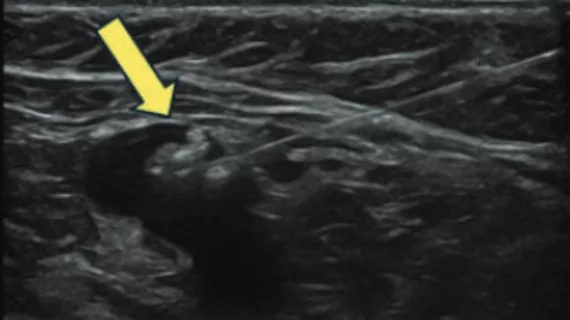Tattoo ink a promising option for localizing sentinel axillary lymph nodes
Tattoo ink could serve as a viable clinical tool for improving the localization of suspicious axillary lymph nodes in patients with breast cancer.
In fact, new research in the American Journal of Roentgenology indicates that using tattoo ink to help surgeons identify nodes that need to be resected is successful in 94% of cases. In some instances, the method even helps to home in on sentinel nodes that may not have been identified during prior procedures.
“After preoperative neoadjuvant chemotherapy for node-positive breast cancer, [sentinel lymph node biopsy (SLNB)]-directed nodal resection misses an unacceptably high fraction of metastatic nodes found by axillary dissection,” Emily B. Ambinder, MD, with The Russell H. Morgan Department of Radiology and Radiological Science at Johns Hopkins Medicine in Baltimore, and colleagues explained. “One approach for addressing this issue is to combine SLNB with targeted axillary dissection (TAD) to remove previously biopsied metastatic nodes. Nonetheless, localization of previously biopsied nodes during TAD is challenging for standard guide wire and nonwire localization methods.”
Having radiologists use carbon ink to mark biopsied sites under ultrasound guidance prior to targeted dissection has emerged as an affordable alternative to other localization methods. The ink, which is injected into the node’s cortex, allows surgeons to easily visualize sentinel nodes that need to be removed.
Since the use of tattoo ink localization is not considered the standard of care, the team sought to get a better understanding of its efficacy. To do this, they retrospectively analyzed 224 cases of patients who underwent tattoo ink localization prior to TAD of a previously biopsied axillary node over a nearly five-year period.
For 223 out of those 224 cases, surgeons reported the ink localization was successful and there were no instances of complications. The node was successfully removed in 94% of procedures, and in nearly all cases, the ink was located in or around the target node.
The team did not observe significant differences in success rates based on prior treatment with chemotherapy, age or history of primary breast cancer. Both radiologist and surgeon experience levels were associated with higher rates of success, as was the timing of the procedure, with those completed within seven days of ink localization having better outcomes.
What’s more, in 13% of cases, the inked node would not have been identified using SNLB alone, the group noted.
The team suggested that tattoo ink localization could be a promising alternative in cases when other methods are not successful.
Learn more about the results here.

